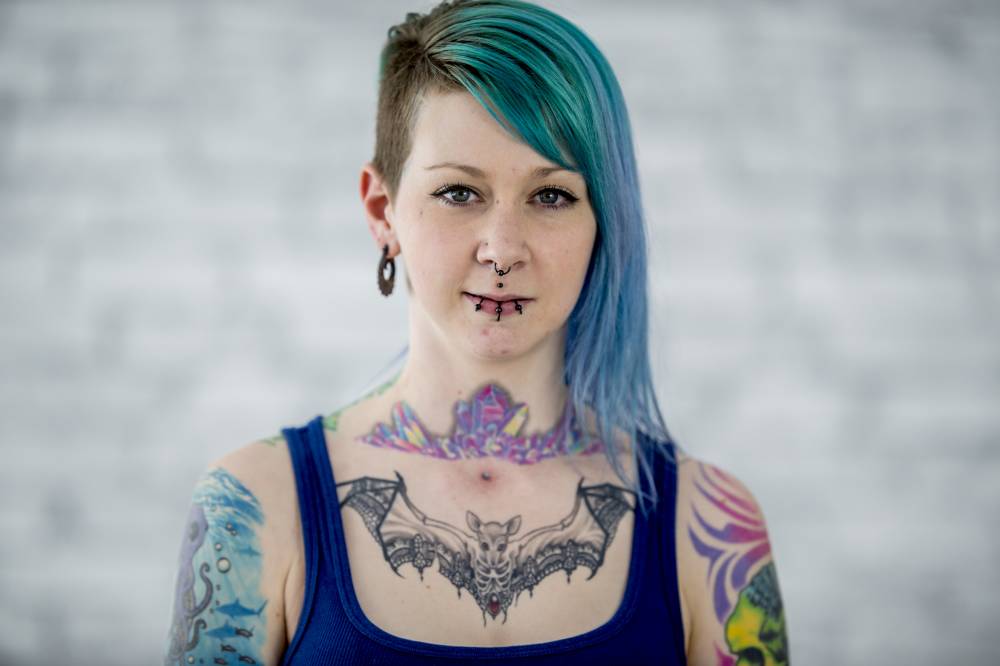
It is estimated that globally 38% of the population have at least one tattoo.
The popularity of tattoos shows no signs of slowing, therefore, it is evident that a percentage of care professionals will have at least one tattoo.
It is not uncommon to see care professionals with tattoos, piercings and brightly coloured hair, but what do the individuals they care for think about this alternative presentation?
I have large stretched ears, piercings, brightly coloured hair and tattoos. Myself and other ‘alternative’ colleagues have experienced a range of reactions from the individuals we have had the pleasure of caring for.
This short article aims to explore some of the responses I have received from the people I care for and a possible explanation for them. The aim of this article would be to break down the stigma of tattooed, pierced and alternative people in caring professions.
First of all, a common reaction I have observed is that a person living with dementia is fascinated with my brightly coloured hair and colourful tattoos. This is often a good conversation starter, it is common for anybody to be fascinated with body art, but for a person living with dementia due to tattoos not being as common when they were younger, they may hold more of an interest into the motivation behind getting a tattoo. This is a fantastic opportunity for interesting and engaging discussions.
Another reason why a person living with dementia might be drawn to brightly coloured tattoos and hair is that bright colours provide a form of sensory stimulation. Due to the sensory impact on a person living with dementia, a person may be drawn to the member of staff with colourful tattoos and/or hair, through the individual’s fascination they may spend more time with the staff member, therefore, building a positive attachment which can lead to increased trust.
Not everybody likes tattoos and coloured hair, this is also the case for a person living with dementia. However, in my experience my tattoos and alternative appearance have not scared individuals as commonly believed. It can, however, cause the person I am caring for to be disapproving and critical of my decisions. For many of the people I have cared for, this has been in a caring way, for example, the individual stating, ‘I really wish you hadn’t, you have ruined your body’ and ‘how will you get a job now’. This fits into the psychological concept of generativity, where a person has a need to nurture and look after younger generations – this is the same concept that explains the power of doll therapy in dementia care.
Kitwood in his book Dementia Reconsidered also explores the application of Transactional Analysis, where we look at what ego state or perspective we communicate in, Parent, Adult and Child. According to Kitwood, we need to help facilitate a person living with dementia to act in all three ego states, therefore, by giving a person something to disapprove of we will facilitate the entering of the parent ego state.
There is a movement towards tattoo acceptance in the workplace. Many people behind this movement state that a tattoo or a person‘s appearance does not impact a person’s ability to do a job. In Alzheimer’s and other forms of dementia, the amygdala – the part of the brain that processes emotions – is effected last, therefore it can be argued that ensuring your approach has compassion and empathy is more important that the care professional’s physical appearance.
This article hopefully has explored the more positive impact of a person‘s alternative appearance in care. We often band around the term ‘person centred care’ and ‘personhood’ in dementia care, but how can we be person centred to the people we care for if we do not celebrate individuality in ourselves as care professionals.
Please note: The image used to illustrate this article does not reflect actual people or events. Source: iStock.
I loved the article, I have worked with people that have piercings, tattoos & brightly coloured hair, I have none of these & found the residents do not care what the carers look like only that they are kind, compassionate & do their job correctly & yes the residents love the staff explaining about the piercings, tattoos & hair, it is a conversation starter & they feel great that the carer takes the time to talk to them. I loved it & all the other articles HelloCare shares with us.
This is very interesting 🤔. It could be that organisation’s start to consider a variety of bright colored nursing tops rather than just one. Could help to settle patients in the acute care setting.